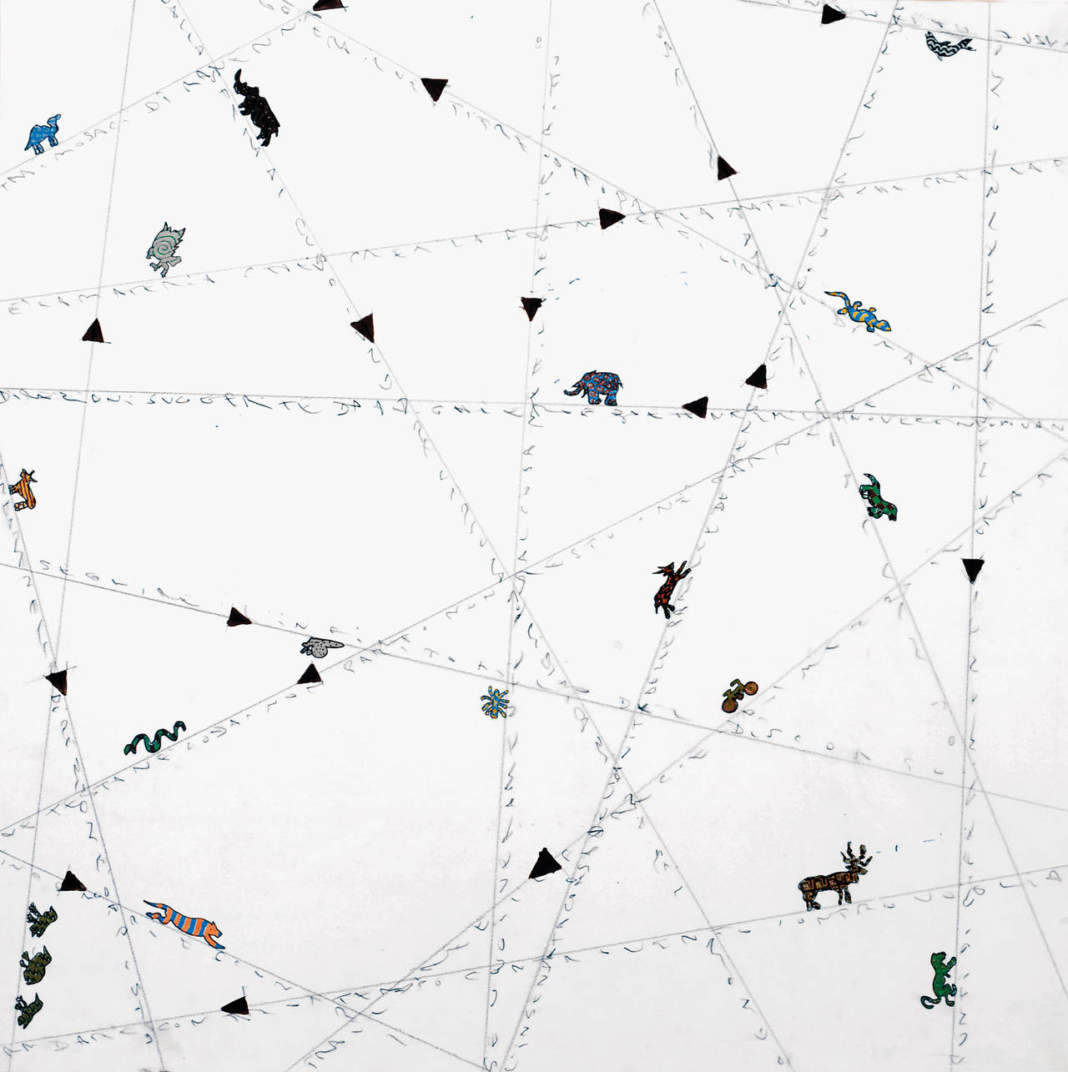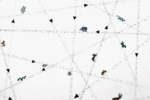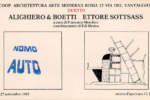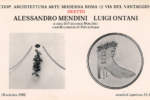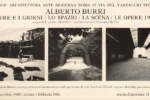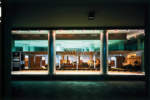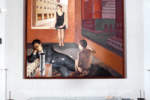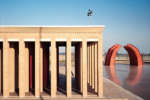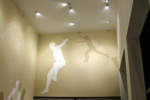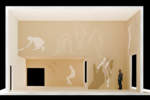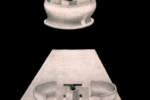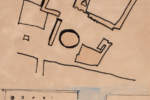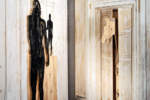A.A.M. The non-secret archive of Francesco Moschini.
None shall sleep.
“One of the problems of cultural life is that of establishing a contact between art and public. Considering this to be, essentially, a question of education, we believe it must be dealt with already in the years of early youth, so that art does not become an abstract and intellectualistic experience, but a direct relationship of exchange between Man and the objects created by him”.
(BBPR, 1954)
Around the mid-Thirties of last century Luciano Anceschi tackled the problematic issue of the “autonomy of art” based on the concept of an “a-priori aesthetic synthesis” to overturn its meaning within a process in which the transition from a unidimensional systematicness to a pluridimensional systematicness marked the modernizing of a disciplinary integration within an extreme figure, as that of the notion of “pure poetry”. Anceschi practically continued the liberation of art from doctrinal mystics and dogmatic cages (which Antonio Banfi, his teacher, had already begun more or less ten years earlier in his treatise “The transcendental principle of the autonomy of art” in “Life in art” - 1924) to stress the canons of a composition which, by grafting the English aesthetic thought dating from the Eighteenth century onto the American Nineteenth-century culture, is based on an unusual association, on “a sudden enchantment”, on accidental manipulation and on the surprise effect in order to form the general foundations of an aesthetic of the anti-gracious and the anti-intellectualistic.
In the same years, even if with implications more expressly oriented towards the educational function of civil society, a similar anti-classical heritage aimed at going beyond a mere contemplative ecstasy of Nineteenth-century origins, became part of the Anglo-American informative spirit, above all thanks to the efforts of John Dewey (Art as Experience – 1934), whose philosophical thought aims at a concept of art as an experience to be lived actively, according to a pedagogic perspective capable of steering clear of the shoals of an exclusively visual approach as outlined in the wake of the theoretical arguments of of Konrad Fiedler and Heinrich Wölfflin. This debate resurfaced in the late Forties thanks to Argan, to favour a highly democratic transmission of art and to accompany that fundamental junction centring on the museographic design and restoration which was such an important element of Italian architecture in the years after World War II, through the work of Albini, Gardella, Scarpa and the BBPR team.
Now, against the setting of this brief chronological reconstruction centring on the confrontation between different artistic disciplines, “integration” is therefore the term explored by Anceschi which enthused and inspired Francesco Moschini in the by now thirty years of his direction of the A.A.M. Architettura Arte Moderna: a place where the two areas referred to in the acronym may reach a synthesis, an interaction between expressive potentials, with the objective of creating a mental space through which the instruments, the materials and the architectures contribute to reinforce the relationship between art and architecture through a procedure of mutual observation which explores the contiguity, as well as the significant interactions, to succeed in breaking down the barriers between the languages. Indeed, it is precisely in this key that the various activities conducted by A.A.M. are to be interpreted; generally speaking they challenge the presumed autonomy of each artistic manifestation. Furthermore, the heritage of the Modern Movement which promotes the mutual semantic exchanges between the disciplines, emphatically projecting them in an interaction between art and science, is studied in depth. In particular, on the basis of a corpus of more than 2,500 drawings, catalogued in the course of a fervent and compulsive desire to accumulate, A.A.M. builds a mosaic of the confrontation between art and architecture, within which one may distinguish the environments related to the sections of history, architecture, painting, sculpture, theatre and design, and the task consists of tracing a map in progress to verify, through an incessant retroductive rearrangement aimed at casting light on the research of artists and architects. In this sense, the “Duets” section has already since 1980 aimed at comparing, on the basis of an angular and incisive comparative interpretation, an architect and a painter whose works feature tacit poetic affinities, similar figurative debts, evident formative intersections, in order to build an encyclopaedia of knowledge which, while bearing witness to the peculiarities of the authors, reveals the play of the play of the sidelong glance. And so Enzo Cucchi and Dario Passi, Alighiero&Boetti and Ettore Sottsass, Costantino Dardi and Giulio Paolini, Luigi Ontani and Alessandro Mendini, as the case may be – among others – have been invited to figuratively render the icons of a personal compositive procedure, to reconstruct the stages of a trajectory in “borderlands”, or in other words in the intermediate area where the paths of their own history touch on signs that lead to an understanding of the other, a sharing of memories, a planning of places where it is possible to “poetically inhabit” the interstitial places of the common “fixed idea”.
Not only. As some of the exhibitions reveal, there is a desire to reinforce the dominion of the conceptual borrowings, of the references and appropriations, to build a “parallel tale” of the events. This is, for instance, the approach inspiring the memorial homage to the figure of Costantino Dardi, whose imaginary spirit, migrant in three different venues, retraces the contribution made at one point for the movie “The belly of an architect”, once again centring it on a reinterpretation of Rome as filtered through the models of Boullée: a true generative arsenal for a focused vision of the city, reconstructed on the traces of Nolli’s Plan. The same thematic area is, for that matter, also explored by the solo shows dedicated to Alberto Burri and to Vito Acconci. The former, ideated in the mid-Eighties, is a new overview of Burri’s work since the Seventies, through a succession of original sketches for the cycles of paintings, within the limited and intentionally cramped space of the venue. The sketches, aligned like the disconnected panels of an incomplete mosaic, project from the wall inside the wooden model of the Orsanmichele in Florence, to capture the relationship between the work conceived for a place and the place itself. The latter, especially in the photographic section of the monumental works realized by Acconci in different sites in the United States, represents a more direct sounding of the relationship between sculpture and architecture, contributing to provide a key of interpretation for the resolutions of a part of contemporary architecture which is often prey to an easy identification between building and sculpture object. Finally, among the initiatives of A.A.M. we would like to mention their projects for Ferruzzi, where they have cooperated with artists and architects for various reasons, within the context of an interdisciplinary relationship indispensible for an understanding of “modern”. In particular, the comparison between different artists has been subject of an important exhibition at the Palace of Arts and Sports of Ravenna, where a juxtaposition of heterogeneous and consensual experiences have been staged. Some of the most significant works shown here comprise the “Great R Iron” by Burri: two large metal hands that surface from the ground, to hold space in a controlled embrace; Giuseppe Uncini’s sculpture in concrete and iron, whose continuous development stages a progressive dematerialization of the surface and a skeletal exhibition of the metal shell in tension and, finally, the tabula of crossing paths followed by Alighiero Boetti, who irradiates the traces of a fabulous transhumant bestiary on the mosaic on the floor.
This consensual relationship also surfaces in other comparisons promoted and backed by A.A.M. They comprise the exhibition-consultation proposed for the National Gallery of Modern Art - which has seen the contribution of six architects and six artists, chosen on the basis of a specific generational approach, who have measured swords with the rests of Luigi Cosenza’s work – and the sophisticated artistic intervention of Elvio Chiricozzi within the context of the CdP (Compagnia del Progetto) project for the planning of all areas of the Hospital of Salonicco, where the figures which transmigrate from one wall to the other create a circular continuity which progressively closes itself within the visual bezel in the background.
In short, even this brief overview reveals Moschini as a tireless athlete who strives to recompose the pieces of a fragment and dissonant whole, to inscribe them within a historical tale that is with some difficulty extracted from the material of his confessed desire: that of overcoming the circumscribed limits of the disciplinary autonomy to unite, in the renewed “mystical union” between art and architecture, theory and practice, analysis and action, tradition and progress.
Efisio Pitzalis was born in 1958. He is lecturer in Architectural Design at the faculty of Architecture in the Seconda Facoltà di Napoli. He is theoretical and research work is focused on modernist movements, whose genealogical sources he interprets, and is conducted in Roma, Aversa, Napoli. In 1996 he founded his architectural office in Rome with Geneviève Hanssen. His experimental architecture is seen through participation in international competitions, in wich he has receved numerous awards. He is interests lie both in the sphere of multipurpose building complexes and in the area of landscape and urban design.


